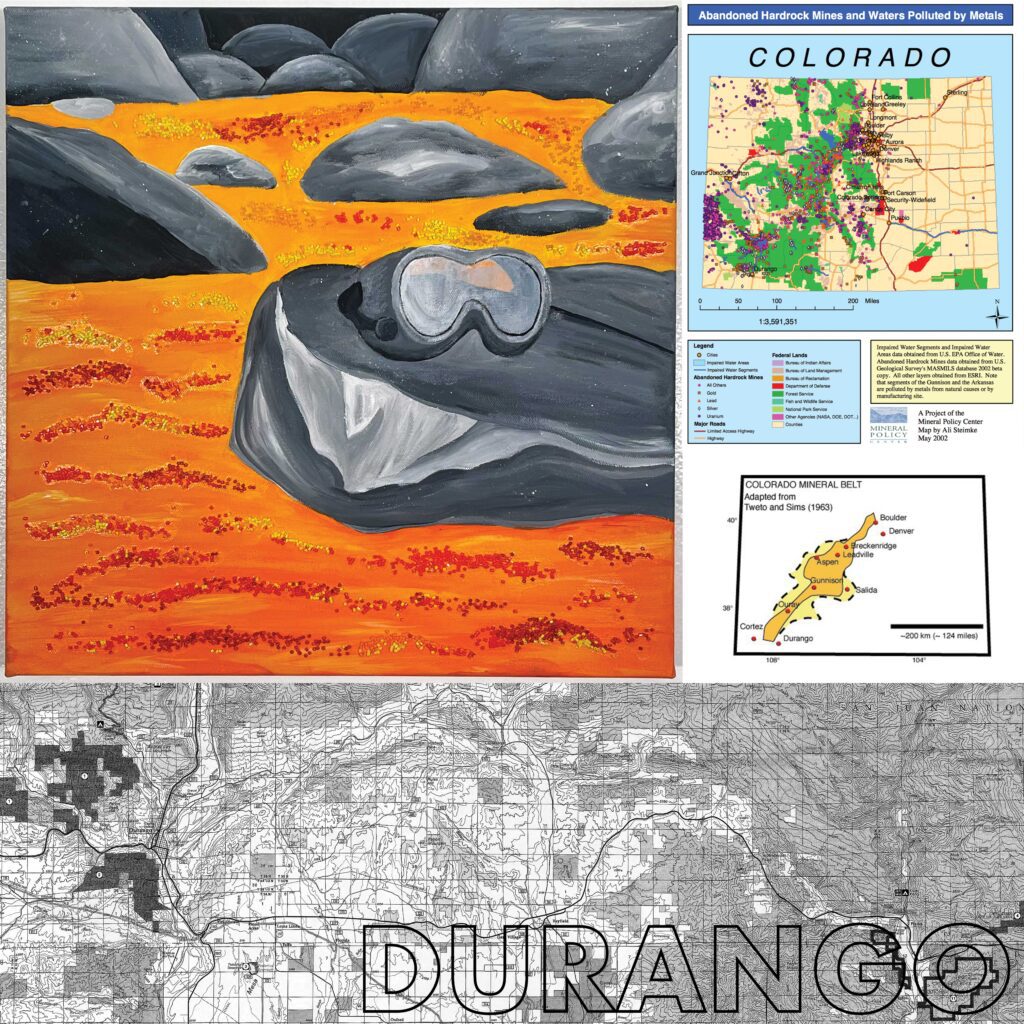
We explored the relationship between acid mine and acid rock drainage in the Colorado Mineral Belt and the effect it has on natural waterways. Acid Mine drainage is water polluted from current and past mining activity. Water naturally passing through these sites can accumulate harmful metals and acid which can negatively affect humans, animals and plants. Acid rock drainage can also happen naturally with warming temperatures that cause lowered groundwater and result in water pollution similar to acid mine drainage. Through these pieces we want to convey the devastating consequences of our history and how it has created a beautiful disaster.
Through this art we want to convey the devastating consequences of our history and how it has created a beautiful disaster.
Art, Science, Place, and Community
We explored the relation between acid mine and rock drainage in the Colorado mineral belt and the ways it affects water in the region. Scientific observation and research has found that this drainage causes unhealthy conditions for all surrounding life.
Abandoned mine drainage is water that is polluted from contact with mining activity, and is normally associated with coal mining. It is a common form of water pollution in areas where mining took place in the past. The resulting fluids may be highly toxic and, when mixed with groundwater, surface water and soil, may have harmful effects on humans, animals and plants. Rock drainage can also happen naturally through things such as hiking, the acidity of water and changes in the environment.
Community perspective was gained through conversation with a rafting guide about their experience of the 2015 Animas River Spill and subsequent acid rock drainage and discussing water issues in the southwest with attendees of a film screening on this topic.
What you can do about the issue
Common methods to preventing and cleaning up acid mine drainage (AMD) include: 1) adding uncontaminated topsoil 2) planting vegetation, 3) modifying slopes to stabilize soil and reduce surface water infiltration, 4) soil removal and relocation to monitor and treat, 5) diverting water from mine sites from running through AMD-forming materials 6) treating acidic water with neutralizing material (e.g. lime) to reduce metal leaching.
Environmental and Social Issues
The issues explored in the artwork are related to water quality and pollution, highlighting the history of mining within the Colorado Mineral Belt while also showing the current state of the environment and the consequences of the past. The Colorado Mineral Belt (CMB) is a 1200-km-wide northeast-trending belt consisting of igneous rock originating from land subduction. The underground molten rock that cooled here approximately 100 – 23 million years ago is rich in ore and valuable minerals which created extensive mining districts.
Science Integrated into the Artwork
Acid rock and acid mine drainage are the result of rock exposed to chemical weathering (i.e., rock dissolving or disintegrating from chemical reactions with rain, snow, etc.). This exposure can occur from mining processes associated with extracting and processing ores and minerals, as well as natural processes attributed to a warming climate subjecting more rock to chemical weathering. The interaction between rock, air and precipitation can cause chemical by-products like acid and dissolved metals to enter waterways. High concentrations of these products can contaminate water and be detrimental to ecosystems and human health.
The artwork shown above is located in the Colorado State Capitol through October 16, 2023.





